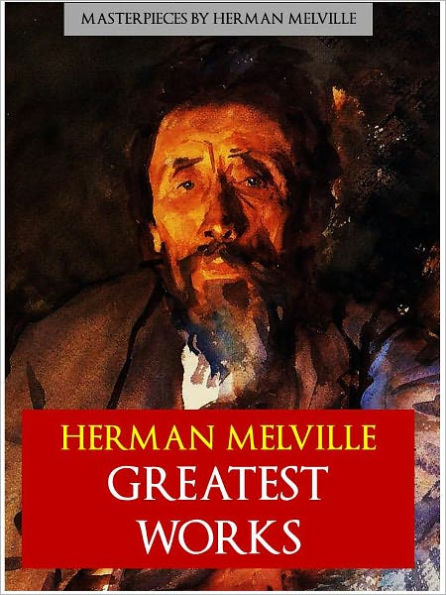HERMAN MELVILLE | THE GREATEST WORKS
(The Complete Unabridged Authoritative Edition)
including MOBY DICK, BILLY BUDD and BARTELBY THE SCRIVENER (A Story of Wall Street) NOOK Definitive Edition
ABOUT MOBY DICK
Moby-Dick; or, The Whale is considered to be one of the Great American Novels and a treasure of world literature. The story tells the adventures of wandering sailor Ishmael, and his voyage on the whaleship Pequod, commanded by Captain Ahab. Ishmael soon learns that Ahab has one purpose on this voyage: to seek out Moby Dick, a ferocious, enigmatic white sperm whale. In a previous encounter, the whale destroyed Ahab's boat and bit off his leg, which now drives Ahab to take revenge.
In Moby-Dick, Melville employs stylized language, symbolism, and the metaphor to explore numerous complex themes. Through the journey of the main characters, the concepts of class and social status, good and evil, and the existence of God are all examined, as the main characters speculate upon their personal beliefs and their places in the universe. The narrator's reflections, along with his descriptions of a sailor's life aboard a whaling ship, are woven into the narrative along with Shakespearean literary devices, such as stage directions, extended soliloquies, and asides. The book portrays destructive obsession and monomania, as well as the assumption of anthropomorphism--projecting human instincts, characteristics and motivations onto animals. Moby Dick is ruthless in attacking the sailors who attempt to hunt and kill him, but it is Ahab who invests Moby Dick's natural instincts with malignant and evil intentions. In fact, it is not the whale but the crippled Ahab who alone possesses this characteristic.
Moby-Dick has been classified as American Romanticism. It was first published by Richard Bentley in London on October 18, 1851, in an expurgated three-volume edition titled The Whale, and weeks later as a single volume, by New York City publisher Harper and Brothers as Moby-Dick; or, The Whale on November 14, 1851. The book initially received mixed reviews, but Moby-Dick is now considered part of the Western canon, and at the center of the canon of American novels.
ABOUT BILLY BUDD
Billy Budd is a seaman impressed into service aboard HMS Bellipotent in the year 1797, when the Royal Navy was reeling from two major mutinies and was threatened by the Revolutionary French Republic's military ambitions. He is impressed from another ship, The Rights of Man (named after the very topical book by Thomas Paine of that period, leading Budd to shout as it leaves "good-by to you too, old Rights-of-Man" clearly intended to have a double meaning, and considered so by the crew who hear it).
Billy, an orphaned illegitimate child suffused with innocence, openness and natural charisma, is adored by the crew, but for unexplained reasons arouses the antagonism of the ship's Master-at-arms, John Claggart, who falsely accuses Billy of conspiracy to mutiny. When Claggart brings his charges to the Captain, the Hon. Edward Fairfax "Starry" Vere, Vere summons both Claggart and Billy to his cabin for a private confrontation. When, in Billy's and Vere's presence, Claggart makes his false charges, Billy is unable to find the words to respond owing to a speech impediment. Unable to express himself verbally, he strikes and accidentally kills Claggart.
ABOUT BARTLEBY THE SCRIVENER
Bartleby is a kind of clerk, a copyist, "who obstinately refuses to go on doing the sort of writing demanded of him." Bartleby can be seen to represent Melville’s frustration with his own situation as a writer, and the story itself is “about a writer who forsakes conventional modes because of an irresistible preoccupation with the most baffling philosophical questions.” Bartleby can also be seen to represent Melville's relation to his commercial, democratic society.



